thanks mkravchenko .do you have an idea of an active crossover which will work with unity horn?
more photos
more photos
Attachments
-
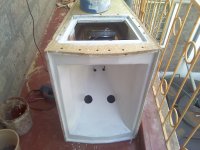 Pic_1116_002.jpg118.2 KB · Views: 647
Pic_1116_002.jpg118.2 KB · Views: 647 -
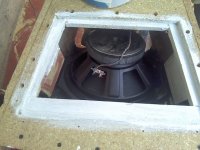 Pic_1116_003.jpg121.2 KB · Views: 622
Pic_1116_003.jpg121.2 KB · Views: 622 -
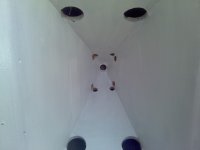 Pic_1116_006.jpg42.9 KB · Views: 631
Pic_1116_006.jpg42.9 KB · Views: 631 -
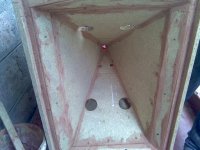 Pic_1115_007.jpg116.2 KB · Views: 612
Pic_1115_007.jpg116.2 KB · Views: 612 -
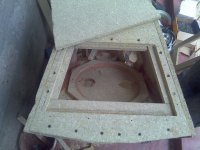 Pic_1115_005.jpg124.7 KB · Views: 611
Pic_1115_005.jpg124.7 KB · Views: 611 -
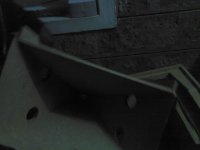 Pic_1114_006.jpg51.3 KB · Views: 156
Pic_1114_006.jpg51.3 KB · Views: 156 -
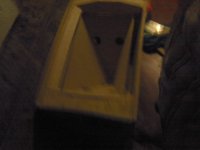 Pic_1114_007.jpg57 KB · Views: 153
Pic_1114_007.jpg57 KB · Views: 153 -
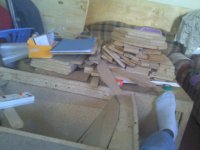 Pic_1114_001.jpg78.5 KB · Views: 177
Pic_1114_001.jpg78.5 KB · Views: 177 -
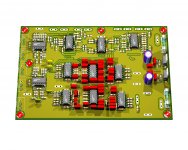 gtG 4way with preamp 35h to 22k.jpg376.3 KB · Views: 177
gtG 4way with preamp 35h to 22k.jpg376.3 KB · Views: 177 -
block diag.pdf10.1 KB · Views: 113
Last edited:
Hi guys,
Im new in unity world, so i have a simple /maybe stupid/ question.
With all this debate about smoothing throat /from circular to rectangular/
why you don't make just circular horn? Is only reason to make rectangular horn /crosscut/ just to have flat surface where BP drivers can be mounted?
Has anybody make some attempt to do unity horn but with circular horn and f.e.
le cleah profile?
Im new in unity world, so i have a simple /maybe stupid/ question.
With all this debate about smoothing throat /from circular to rectangular/
why you don't make just circular horn? Is only reason to make rectangular horn /crosscut/ just to have flat surface where BP drivers can be mounted?
Has anybody make some attempt to do unity horn but with circular horn and f.e.
le cleah profile?
Please joking aside. Im no native speaker so i dont understand if its irony 
So as far i understand - the BP holes should be as short as possible. Not very easy achievable with circular horn /im still talking about crosscut/
But nevertheless, question is still valid. Why nobody try to combine unity idea with other horn geometry.
As far as i understand unity horn is conical with some sort of impedance matching at mouth to reduce mouth reflection.
Many people complain that unity is too bright without making the response falling. Maybe geometry that has falling HF powerresponse at default /like lecleah/ is better solution. Im just brainstorming. On axis flat - PR falling doesn't sound same as On axis fallig PR flat.
I also understand that rectangular at same dimension has lower cutoff than circular but these are mainly PA concern.
Many thanks,
So as far i understand - the BP holes should be as short as possible. Not very easy achievable with circular horn /im still talking about crosscut/
But nevertheless, question is still valid. Why nobody try to combine unity idea with other horn geometry.
As far as i understand unity horn is conical with some sort of impedance matching at mouth to reduce mouth reflection.
Many people complain that unity is too bright without making the response falling. Maybe geometry that has falling HF powerresponse at default /like lecleah/ is better solution. Im just brainstorming. On axis flat - PR falling doesn't sound same as On axis fallig PR flat.
I also understand that rectangular at same dimension has lower cutoff than circular but these are mainly PA concern.
Many thanks,
Last edited:
Digital signal processors that allow different slopes, corrective parametric EQ and delay will make "dialing in" a flat phase and frequency response pretty easy. You will also be able to store many presets, allowing for different placement or sub choices, or quick A/B comparisons.thanks mkravchenko .do you have an idea of an active crossover which will work with unity horn?
I use the DBX DriveRackPa (the cheapest, least amount of features in the DBX line up), many seem happy with MiniDSP or the Behringer DCX 2496.
Those all are on the cheaper end, DSP can easily go 5 times higher in expense, but generally you are then paying for features that you won't need.
How about this one?
WAF - Wroclaw Audio Force
Looks perfect for our needs.
A thread on the avs forum:
http://www.avsforum.com/t/1466915/najda-dsp-board-for-loudspeaker-applications
WAF - Wroclaw Audio Force
Looks perfect for our needs.
A thread on the avs forum:
http://www.avsforum.com/t/1466915/najda-dsp-board-for-loudspeaker-applications
Last edited:
Member
Joined 2009
With all this debate about smoothing throat /from circular to rectangular/
why you don't make just circular horn?
I have a vague memory of Tom Danley himself commenting on the advantages of a rectangular design.
I'm sure there are more reasons than one, the obvious being simplicity but here is what I got out of it. If you imagine the sound to arise as a circle from the center of the horn, the rectangular edges would naturally be pockets of lower pressure. This helps minimize reflections from the port holes in the edges and also helps the midrange waveform develop with less interference from the HF sound wave when they cross over.
See the recent thread "Unity/Synergy Horn" about why square horns are chosen and a link to a currently manufactured round Unity horn.
I suppose you mean this one
http://www.diyaudio.com/forums/multi-way/237050-understanding-danley-synergy.html
I just use a Technics receiver for my home stereo, Synergy horns are too deep for my listening room, I'd not be able to open the door to the laundry roomthanks welter. i hope i get a three way 24db crossover schematic that will work with unity or synergy. by the way how many wattage amp do you use?
My stereo PA (per side) uses a Crest CA-9 bridged mono (around 2000 watts) in to a Keystone tapped horn, one side of a QSC PLX 3602 to drive 14 eight inch speakers (around 1800 watts), the other side driving 5 HF drivers (around 1300 watt available, but probably less than 600 watts peak used).
No "three way 24db crossover" will work optimally with the Synergy, the crossover slopes and frequencies must be matched to your particular cabinet.
Easy to do an optimal match with DSP, quite difficult to design a passive or active analog crossover that will do exactly what is needed for a Synergy crossover, even if you have good test gear and the knowledge of how to manipulate the crossover frequencies while maintaining flat phase response.
The cabinets are relatively easy, the crossover is not at all easy to get right.
Art
I suppose you mean this one
http://www.diyaudio.com/forums/multi-way/237050-understanding-danley-synergy.html
No, tho there is lots of good info there. I was referring to the title of the thread exactly as I had it in quotes. I'm on my phone otherwise I'd post the link.
Hi guys,
Im new in unity world, so i have a simple /maybe stupid/ question.
With all this debate about smoothing throat /from circular to rectangular/
why you don't make just circular horn? Is only reason to make rectangular horn /crosscut/ just to have flat surface where BP drivers can be mounted?
Has anybody make some attempt to do unity horn but with circular horn and f.e.
le cleah profile?
The reason why a square or rectangular horn is better for a Synergy horn is the acoustical pressure is lower in the corners. In an axial symmetric horn the acoustical pressure is the same. The advantage of the corners is since the acoustical pressure is lower, the mid range entry ports have less impact to the compression driver’s frequency response. In other words, the mid range entry ports can almost become acoustically invisible to the compression driver. Somewhere in all these threads Mark Seaton or Tom Danley said something about how the Yorkville had several issues to overcome and in the end they had to settle for compromises that are not present in current Synergy horns.
- Status
- This old topic is closed. If you want to reopen this topic, contact a moderator using the "Report Post" button.
- Home
- Loudspeakers
- Multi-Way
- Unity Horn - budget drivers, active x-over

